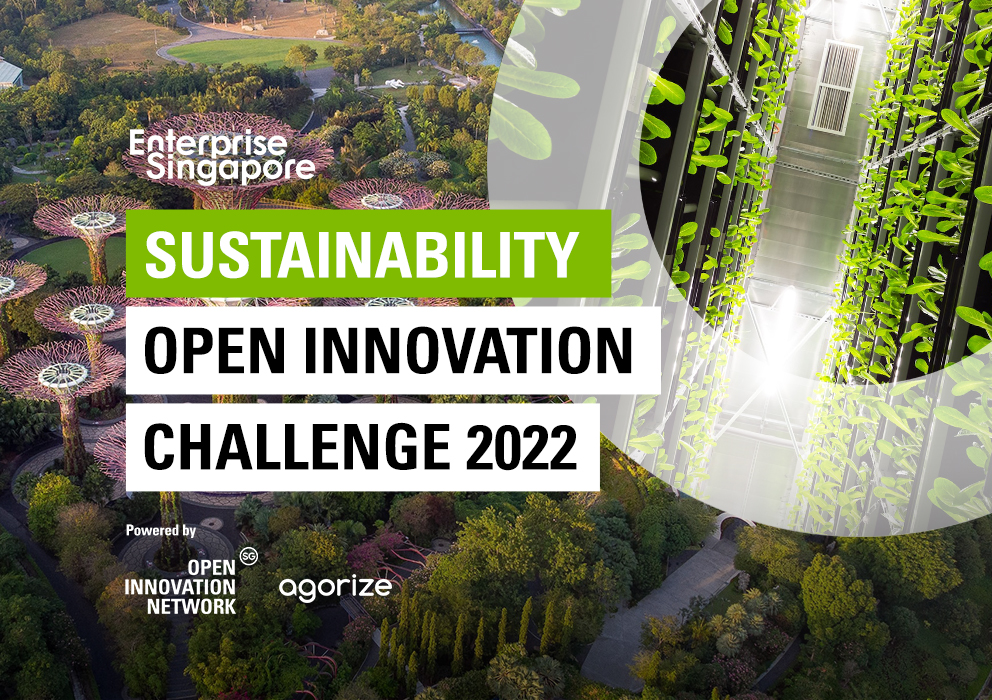
| Challenge Owner(s) |
Asia Pacific Rayon, CJ CheilJedang, Dole, EM Services, Fei Siong Group, Haier Group, Kellogg's Asia Pacific, Olam Agri, RGE-NTU SusTex, SembWaste
|
|---|---|
| Organiser(s) | Enterprise Singapore |
| Industry Type(s) |
Agri-tech, Circular Economy & Sustainability, Infrastructure, Retail, Urban Solutions
|
| Opportunities and Support | Prize money, paid trial and pilot opportunities await! |
| Application Start Date | 25 October 2022 |
| Application End Date | 28 February 2023 |
About Challenge
Our planet is facing unprecedented challenges. Threats to our environment with global warming, excessive single-use waste and depleting natural resources have instigated an urgent need to develop and implement solutions to help sustain our planet for future generations.
Our 4th edition of the Sustainability Open Innovation Challenge, launched by Enterprise Singapore, aims to bring together industry partners and creative innovators to co-develop sustainable solutions. Solutions should be implemented locally and regionally before pushing them out on a global scale.
For this challenge, each of our industry partners bring a unique challenge statement addressing key themes of Green Buildings, Renewable Energy, Sustainable Food Source, Zero-waste, Sustainable Materials and Packaging.
Winning innovators will access a unique opportunity for co-innovation with corporates, benefiting from their extensive expertise, mentorship and resources. Other prize rewards include potential grant support from Enterprise Singapore, S$70,000 from Hexagon Group, alongside potential funding and test-bedding opportunities from the industry partners themselves.
The time is now to make a tangible difference to your business and the sustainable goals of our planet. Apply for the Sustainability Open Innovation Challenge 2022 today!
| Challenge Owner(s) | Asia Pacific Rayon |
|---|---|
| Industry Types(s) | Circular Economy & Sustainability, Energy & Chemicals |
Asia Pacific Rayon
Spinnerette cleanliness is critical in the fibre spinning process. The current standard industry practice is to use a chromic acid solution for spinnerette cleaning. Dichromate is a strong oxidising agent, mixed with sulphuric acid to produce the chromic acid solution to remove all impurities.
What We Are Looking For
We are looking for solutions that:
- Can become a suitable chemical substitution for Dichromate to supplement our existing spinnerette cleaning process
- Novel cleaning processes to completely replace the existing spinnerette cleaning process and to achieve similar cleaning results.
| Challenge Owner(s) | CJ CheilJedang |
|---|---|
| Industry Types(s) | Circular Economy & Sustainability, Energy & Chemicals |
CJ CheilJedang
Edible seaweed is considered a nutrient-rich superfood with abundant benefits for the human diet. As one of Korea's leading food culture companies, CJ Cheiljedang has selected the dried seaweed snack as one of our Global Products, in order to serve healthy foods to consumers around the world. Under the influence of K-Pop, CJ Cheiljedang has exported dried seaweed snacks to the US since 2010. As of today, our dried seaweed snacks are sold in over 19 countries worldwide.
Our dried seaweed snack is grilled at a high temperature, exceeding 700ºC, and coated with a variety of oils to add flavour. These products are sold in carefully designed packaging to maintain the crispiness and complex fragrance of the snack. Seaweed snacks are sold in a plastic tray for product protection, along with a silica gel packet packaged in a multi-layer film. The multi-layer laminate film was designed to prevent rancidity and the packet protects the product from moisture absorption. The current packaging composition has two main problems:
- It is difficult to recycle multi-layer films
- Misuse of the silica gel packet
Recycling multi-layer films (including aluminium foil) is challenging due to the different chemical incompatibilities of the various layers. As a result, in Korea, multi-layer films are incinerated and therefore add toxic pollutants to the environment.
Silica gel is a desiccant which prevents moisture from damaging food products. Although it is harmless, consumers, especially children, can mistake a packet for food or other table condiments such as sugar or salt. Additionally, in contrast to the impression of seaweed as 'superfood', the silica gel packet delivers the impression of unsafe toxic chemicals, in contact with the food products.
To improve the recyclability of the multi-layer film, we tried to replace the aluminium layer with vaporized PET (OTR, WTR: nearly 1cc/m2∙day), as well as applied modified-atmosphere packaging. Both of our trials were unable to pass our barrier performance test and the production line speed could not satisfy our needs. Currently, there is no oxidation problem because aluminium laminated pouches and silica gels are used. However, when a film without barrier function is used, the shelf life is less than 1 week.
We are looking for sustainable materials that can eliminate the silica gel packet, increase recyclability of the multi-layer film, and protect the property of the product.
| Industry Types(s) | Agri-tech, Digital/ICT |
|---|
CNH Industrial Services
71 million tonnes of Palm Oil are harvested annually - 84% of that in Indonesia (Hectare 15 mil) and Malaysia (Hectare 5 mil), with Hectare 8 million ground outside of these two countries. Currently, 100% of Palm Oil is harvested by hand. The process involves people walking through the Palm Oil Fields and using knives on long poles to cut the fruit from the trees. Fruit bunches hit the ground and “explode”, so a second operation is required to collect the fruit bunches and loose fruit (containing the most oil) from the field floor.
We have never before tried a solution to solve this problem but the consequences for CNHI are significant. Fruit is often left to “rot” on the tree due to labour shortages. The situation has worsened due to the Covid pandemic, as a lot of migrant labour is used. Improving harvesting efficiency will maximise yields from current Oil Palm growing areas. In addition to this, operator safety is currently being neglected, which is another issue we hope to address.
The solutions provider will be working with limited access to infrastructure (such as connectivity and electricity)
CNHI is looking for solutions providers to automate the harvesting process using robotics, specifically for Palm Oil.
| Challenge Owner(s) | Dole |
|---|---|
| Industry Types(s) | Agri-tech, Circular Economy & Sustainability, Food Manufacturing |
Dole
Dole is involved in the business of growing and processing fruits in Thailand and Philippines. These fruits primarily include Pineapple, Banana, Papaya, Guava, and Mango, and a smaller quantity of Watermelon, Aloe Vera, Mandarin Orange and Rambutan.
Before our products reach the distribution stage, we lose and waste fruits, or parts of fruit, due to various reasons:
- Visual and specification requirements for quality at farm/factories - inedible fruit parts that are not used in the current product portfolio
- By-products from factories including the pressed pulp of skin and seeds/stones
Current fruit waste materials that Dole is looking to upcycle include:
- (a) Leftovers from Bromelain processing
- (b) Leftovers from Pineapple green fiber processing
- (c) Solids of juice centrifuge
- (d) Yellow and green banana peel
- (e) Papaya seed cake
We are currently converting waste streams into the following resources:
- (a) Biogas
- (b) Feedstock for animals
- (c) Landfill for composting
Therefore, Dole is not looking for the above solutions.
As part of its goal to save 55,828 metric tons of fruit waste, Dole is looking to phase out the aforementioned waste streams and replace them with novel and more sustainable application areas.
Dole is looking for an opportunity to reduce and/or upcycle fruit loss and waste in all areas of our value chain. We are therefore looking for solution providers in the following areas:
- Factory / Packing house fruit waste reduction
- Factory / Packing house upcycling
- For upcycling, we are happy to consider any solutions (not limited to the Food & Beverage industry). In the case of applications in the Food & Beverage industry, Dole is looking to further understand the claims and benefits of the potential application, as validated by lab analysis or test.
| Challenge Owner(s) | EM Services |
|---|---|
| Industry Types(s) | Circular Economy & Sustainability |
EM Services
EM Services manages more than 2000 playgrounds, many of which are currently equipped with EPDM flooring mats. Due to the wear and tear of the EPDM flooring mats, we will need to replace them when they reach their lifespan. Currently, all used flooring mats are disposed of and sent to be incinerated, which produces carbon emissions and a significant carbon footprint. At this moment, there are no solutions or approaches for us to be able to recycle our flooring mats.
What We Are Looking For
We are therefore looking for solutions to recycle effectively, with two potential routes to market afterwards:
- Potentially recycling the EPDM flooring mats materials back into our own business
- Finding novel products/solutions or use cases based on the EPDM recyclable materials (examples could include: matts or tiles for shopping malls, temperature or sound insulation for houses/roofs or pre-cast construction, running (shoes), drainage layers for roof gardens (since the material is porous)
| Challenge Owner(s) | Fei Siong Group |
|---|---|
| Industry Types(s) | Circular Economy & Sustainability, Food Services, Infrastructure |
Fei Siong Group
As one of the major food outlets (dine-in as well as take-away) in Singapore, FSG is looking to decrease its carbon footprint and waste. Currently, one of our main sources of waste is food waste.
What We Are Looking For
FSG is therefore looking for solutions that can help us to reduce our food waste. Solutions can include:
- Solutions for collection, segregation and recycling of our existing food waste
- Solutions for upcycling our existing food waste into new resources/materials / products (such as disposable packaging)
FSG is looking for solutions that are economically viable. Currently, we are experimenting with solutions such as a 'food digester' that converts solid food into water. The solution has important limitations however such as:
- We are only able to convert solid foods
- The food is converted into water rather than other (more valuable) resources/materials/products
Additionally, FSG makes use of a manual process to collect and dispose of the food waste. This is done manually and once a day. Food is not segregated nor recycled.
We are looking for an initial implementation in our atrium which ranges from 4,000 - 6,000 sqft, where most of the spaces are utilized for kitchens, stall front, seating areas as well as storage. All of the outlets' spaces are tenanted by the landlord and we have to operate on a “as is where is” basis, hence solutions that will not incur major changes to the existing infrastructure are preferred.
| Industry Types(s) | Energy & Chemicals, Environmental Services, Infrastructure, Urban Solutions |
|---|
GlobalFoundries
Currently, greenhouse gas abatement (particularly F-GHGs) in semiconductor fabs is performed at the point-of-use level with cabinet-sized abatement systems for each tool. This necessitates a large area which also requires utilities to maintain a subfab environment suitable to house these point-of-use abatement systems. This is a capital-intensive solution and imposes a limitation on older fabs through space and utility constraints when they are trying to upgrade their level of greenhouse gas abatement.
Solutions we are not interested in include:
- Point-of-use level abatement systems requiring subfab space or targeted tool selection for abatement system deployment
- Systems requiring the introduction of new specialty gases
- Systems generating solid non-renewable waste
Develop a facility-level abatement system for the destruction of greenhouse gas from semiconductor fab exhaust.
| Industry Types(s) | Energy & Chemicals, Environmental Services, Infrastructure |
|---|
GlobalFoundries
Currently, wastewater treatment processes generate sludge which is usually disposed of in landfills. However, some of these sludges contain valuable minerals which could be reused in various industries if only they could be extracted into mineral or chemical form.
Up to 2,500 tonnes of this sludge is produced each year by wastewater biotreatment and chemical treatment. Previously membrane-based technologies had demonstrated the feasibility of extracting minerals from industrial wastewater but did not have the faculty to separate multiple minerals mixed in the wastewater out into distinct streams with individually greater utility and economic value.
Therefore GF is looking for novel solutions that can extract minerals out of industrial sludge for reuse.
Solutions GF is not willing to consider include:
- Technologies which cannot separate out a mix of minerals from the wastewater.
- Technologies in which the end-product is not a concentrated brine or mineral solids.
- Technologies which cannot work with either
- (1) high-volume industrial wastewater cheaply and efficiently, or
- (2) include pre-treatment methods to work with industrial sludge.
| Challenge Owner(s) | Haier Group |
|---|---|
| Industry Types(s) | Circular Economy & Sustainability |
Haier Singapore Investment Holding
At this moment in time, filters are used as one of the main methods to remove microplastics to discharge washing machines.
This however, is not the most sustainable method as these filters need frequent replacement. Additionally, it is not always known when filters reach their end-of-life and therefore replacement might happen too frequently or perhaps not enough. To summarize, the issues we currently face with the existing filters include:
- Lifetime: there is a lack of understanding with regards to the lifetime of the filters leading to too early or too late replacement
- Effectiveness: the effectiveness of the filters to remove microplastics can still be improved
- Disposing of filters: Currently, filters are not 100% recyclable so whenever filters are at their end of life, oftentimes consumers will dispose of the filters where it might end up in incineration
As a result, Haier is looking for novel solutions to either replace the filtration system all- together OR if this is not feasible, for solutions to improve the effectiveness and/or lifetime of filters.
| Challenge Owner(s) | Swisse |
|---|---|
| Industry Types(s) | Food Services, Retail |
*dietary supplements refer to vitamin, mineral and health supplements, including herbal extracts and probiotics.
Swisse is a premium health and wellness global powerhouse, established in Australia in 1959, with presence in 14 countries including Singapore. Swisse has a wide range of products under dietary supplements, with numerous product formats such as capsule, tablet, chewable tablet, gummies, powder and jelly.
At Swisse, our sustainability impact areas are integral to everything we do, and that includes Reducing our Footprint on The Planet. Packaging plays an important role in ensuring stability of active ingredients in our formulations, and we continually aim to identify and implement packaging solutions which are more environmentally friendly.
In 2021, we introduced a new 5Rs packaging framework which has now been applied to our new product development process - prioritising the sustainable practices of Reduce, Renew, Recycle, Reuse and Regenerate. An example of our new product guided by this framework was the new Swisse Earth range – consciously packed with sustainably sourced packaging, made mainly from bio-based packaging materials, with the primary packaging canister made from 70% recycled paper, and it is fully recyclable.
While packaging formats such as sachets and pouches offer convenience to consumers, it remains a challenge to make them recyclable due to the presence of an aluminum layer in the packaging, commonly used to ensure that the product is stable for a duration of more than 6-12 months. For example, jelly stick packaging material often uses PET12/AL7/NY15/LLDPE50. In addition, it is also important to maintain product stability of remaining pieces after opening the pack, meant for more than 1 day serving.
Swisse would like to find a sustainable sachet / pouch format for dietary supplement, with a target shelf life of 24 months.
| Challenge Owner(s) | Kellogg's Asia Pacific |
|---|---|
| Industry Types(s) | Circular Economy & Sustainability, Food Manufacturing |
Kellogg's Asia Pacific
To reduce the impact on the environment and to reduce costs, a solution to extending the life of Oils used in the manufacture of Pringles products would be highly desirable.
We have considered the use of synthetic and natural antioxidants, as well as adsorbents for removal of oil degradation products. We are not looking to re-evaluate these solutions in this challenge unless there is a novel development vis-a-vis what is commercially available. We would not be interested in a solution that requires a Capital investment over $100K per line unless there was a return on investment less than 3 years.
In line with the aforementioned problem background, Kellogg's is looking for any type of solution that will help us extend the lifetime of our oils. Solutions that can be considered can include:
- Process innovation to extend oil lifetime
- Potential novel oil or additives
- Approaches to recycle current oil volume (in situ)
- Any other solution that could help extend oil lifetime
| Challenge Owner(s) | Olam Agri |
|---|---|
| Industry Types(s) | Agri-tech, Circular Economy & Sustainability, Urban Solutions |
Olam Agri
Olam Agri is interested in adopting solutions to reduce water usage of small-holder rice farms. Currently, wetting-drying of a rice field is done as follows:
- Holes are drilled at a 20 centimetre depth
- A PVC-tube is placed inside which protrudes 10 centimetres above soil level
- Visual manual inspection is conducted by observing the tubes (typically this is done once a day)
- If the water level is higher than 5 centimetres above the soil level, farmers will drain. If it's lower than 15 centimetres below the soil, farmers will flow.
To reduce water usage, there are currently a number of hurdles including:
- The labour cost of existing solutions. For example, in order to operate alternate wetting-drying in a field (which can reduce water usage as much as 40% and GHG emissions by 50%), the farmer must manually check water levels each day. For rural areas, where farmers live remotely from their field, or situations where farmers travel for second jobs, manual field checks have a high opportunity cost.
- The cost: Digital sensors connected to cell phones to alert the farmers when irrigation is needed is an exciting opportunity, but too costly.
- Sensor reliability: Only 33% of deployed water sensors actually work in practice. So the reliability is low.
If we are able to find novel solutions to tackle the aforementioned issues, we believe that the GHG footprint of small-holder rice farms can be reduced significantly, as rice flooding directly leads to methane production (one of the most potent GHG's).
We have been experimenting with different types of solutions and believe that interesting solutions could include:
- Arduino chips + DIY solutions to measure water levels
- Self-programmable chipsets at low cost
The solutions provider will be working with limited access to infrastructure (such as connectivity and electricity)
We are looking forward to receiving proposals from solution providers that can tackle all the issues highlighted. This solution can attach itself to carbon credit generation and could potentially qualify for UN FCCC pre-approved CDM, which greatly enhances commercial roll-out potential.
| Challenge Owner(s) | RGE-NTU SusTex |
|---|---|
| Industry Types(s) | Environmental Services, Retail, Urban Solutions |
RGE-NTU Sustainable Textile Research Centre (RGE-NTU SusTex)
Each year 90 million metric tons of textile waste is generated globally and 190,000 metric tons in Singapore alone. However, only a tiny fraction of it is recycled. There is virtually no demand for used apparels in Singapore and the demand from overseas is also diminishing partly due to banning of cross border shipment of waste streams. Currently there is no proper solution for textile waste collection and management in Singapore, and most textile waste is incinerated.
Develop cost effective and deployable solutions for collecting and sorting textile waste in the urban environment.
| Challenge Owner(s) | SembWaste |
|---|---|
| Industry Types(s) | Circular Economy & Sustainability, Energy & Chemicals |
SembWaste
The Zero Waste Masterplan was launched in 2019 to lay out our vision and strategies for Singapore. The Masterplan sets out a target to reduce the amount of waste going to the landfill by 30 per cent while achieving a 70 per cent overall recycling rate by 2030.
In order to achieve these targets, Sembcorp is looking to work with innovative startups that can help to capture and generate value out of our waste streams and convert them into precious resources such as energy, biomass and/or fuel.
We are interested to consider a variety of closed loop recycling solutions for various waste streams, examples could include:
- Food waste
- Plastics
- Paper
- Metal
- Glass
- Textile
We are generally interested in exploring a variety of waste streams as long as we feel the solution is implementable within our business.
Currently, SembWaste deals with waste collection, sorting and recycling through the Incineration Plant and Materials Recovery Facility respectively. SembWaste is open to consider changes in our current process if the proposed solution proves its efficacy for our business.
While there are many technologies that work well in an operational setting overseas, not all solutions are sustainable and/or economically suited for densely populated cities such as Singapore. An example would be the fact Singaporean food waste is much more varied in composition as compared to other countries or geographies.
| Challenge Owner(s) | Sentosa Development Corporation |
|---|---|
| Industry Types(s) | Hospitality, Retail, Sustainable Energy |
Sentosa Development Corporation
- Beyond deployment of conventional solar PV panels, there are more opportunities to harness solar energy through novel applications of solar technologies and non-conventional solar installation that factors in aesthetic considerations as well as the structural context.
- Specifically, SDC is looking to deploy new solar technologies and structures for non-conventional location and structures including: round structures, vertical structures etc.
- Deployment of these technologies could also harness the potential to yield brand value and experience benefits to Sentosa as a sustainable destination and to achieve our carbon neutrality goal.
- There are also opportunities for guest engagement and serving as a form of public education on novel applications of solar energy.
- Locations for consideration:
- Siloso Skywalk
- Tiled Roofs on Pavilions
- Golf Club Building
- Others (e.g. Siloso Point Cableway Station building)
Maximize the harnessing of solar energy on Sentosa through novel, non-conventional applications of solar technologies that can be deployed on different form factors (e.g. vertical or round structures) that meets regulatory safety requirements and incorporates considerations such as guest experiences and aesthetics.
| Challenge Owner(s) | Shiseido Asia Pacific |
|---|---|
| Industry Types(s) | Circular Economy & Sustainability |
Shiseido Asia Pacific
Cosmetic packaging is seldom recycled due to its small size and complexity.
Issues include:
- Materials: the utilisation of different materials and plastic types
- Size: small size packaging (not collected in current waste streams)
- Decoration: various decorations processes (direct printing, sleeves, etc)
- Residue (in some cases): product left over in the packaging
The world plastic recycling average rate is low ~ 9% (with only 6% in Singapore).
Today many recyclables are not segregated by consumers or, if segregated, get contaminated by general waste (40% contamination in Singapore). The only type of plastic packaging recycling that is being implemented at scale is manual sorting of detergent or water bottles (towards mechanical recycling). Shiseido is therefore looking for solutions to recycle cosmetic packaging that can be scaled, and where the aforementioned issues can be solved.
Our packaging waste comes from 2 sources:
- Consumer waste (which could be collected in our own point of sales): Collection of these will depend on consumer's behaviour (supported by incentives), however, we are unable to estimate the amount of packaging that could be collected
- Destruction of unused / unsold products due to expiry or discontinuation (available in our warehouses): The amount of packaging collected is under our control however, in this case, there are additional steps to consider as the product is “new” , such as unboxing and removal / emptying of the content.
Shiseido is looking for solutions that can tackle both or one of the aforementioned waste sources (consumer waste as well as unused/sold products).
| Challenge Owner(s) | Solarvest Holdings |
|---|---|
| Industry Types(s) | Digital/ICT, Energy & Chemicals, Infrastructure, Urban Solutions |
Solarvest Holdings
At this moment, buildings generating excess energy from renewables sometimes suffer from overproduction of energy and are not able to feed that energy back into the grid. This leads to a loss of energy, especially during seasons when the energy needed is much more volatile.
Buildings are looking to sell their energy directly to other consumers at a competitive tariff rate (with capped amount of energy in some cases) compared to energy from the grid. This, however, leads to a number of problems including:
- Current smart meter interfaces may not allow full control and may have less flexibility of electricity being sold (prosumer) and control intake of energy (consumer)
- The existing infrastructure for efficient and effective energy to be fed back to the grid is not readily available between buildings
- Incentive systems are not in place to enable for continuous feeding back into the grid
We have not tried solutions to solve this problem before and are open to consider different novel solutions. At the same time, Solarvest recognises this is a big problem to solve and part of the problem is the requirement to have a mature and reliable (smart) grid infrastructure. We therefore do not expect a full end-to-end solution, but are instead looking for solution providers that have smart solutions that can help us move into the direction of a fully developed P2P market.
Solarvest is not interested in the utilisation of storage systems or systems that emphasise on-grid reliance.
| Challenge Owner(s) | Solarvest Holdings |
|---|---|
| Industry Types(s) | Infrastructure, Urban Solutions |
Solarvest Holdings
At this point in time, due to the rigorous nature of existing solar panel installation structures, there are quite a few rooftops or façades where it is not possible to install solar panels (approximately 20-30% of cases). Consequently, Solarvest is not able to serve this part of the market. As a result, we are looking for novel solutions that allow for solar panel installation in more difficult and challenging circumstances. The main problems we currently face are:
- The total weight of the installation as well as solar panels cannot be carried by the roof or façade
- For certain rooftops or façades, due to the structure of the rooftop or façade, it is very difficult to do the installation, leading to longer installation times and potentially, hazardous situations for the staff doing the installation
- The current installation method can lead to water leaking
- The current installation method does not allow for pre-determined universal structures or cable routing and is unable to overcome sharing effects which could cause hot spot hazards. This could also mean potential lower energy yield generation and therefore reliability concerns.
- If we simplify the installation structure, the overall cost of installation goes down, potentially increasing the ROI and therefore the likelihood that more companies decide to install solar panels.
Currently, solar panels are typically installed as follows:
A corrugated metal sheet is first built on top of the roofs or façades. This requires specific design engineering and installation labour. Next, a mounting structure, brackets and clamps are installed before the solar panel is fixed to the entire structure. Subsequently, the Inverters are installed, trunking and cabling works then follow, tapping into a termination point. In the final stage, testing & commissioning of the system will be done, which results in a redundancy in design and labour for the same surface.
We are not interested in Conventional Solar Panels which pair up with “water-proofing mounting structures” to build Integrated PV systems. Similarly, we are not interested in solutions for lighter solar panels.
We are specifically looking for novel and more lightweight mounting structures.
| Challenge Owner(s) | Teo Garments Corporation |
|---|---|
| Industry Types(s) | Circular Economy & Sustainability, Retail |
Teo Garments Corporation
When fabric rolls are laid out for cutting in factories, the off-cuts are set aside as scraps.
If not sorted or organised, the waste can consist of different materials (cotton, polyester, CVC, TC or any other contents). The typical practice of factories is to dispose of the waste post-production to waste handlers for consolidation.
Fabric scraps can be re-used commercially in areas such as composite materials like mattress fillings, but in these cases they are effectively down-cycled. In some instances, they are used as feedstock to run boilers, but it is a pollutive process.
We are looking for solutions to recycle and/or upcycle our textile waste into higher value novel resources.
At this moment, the current recycling/upcycling process of textile waste faces the following key challenges:
- Recycling/upcycling of collected textile waste is challenging because of the impurity of the contents. It is therefore essential for solution providers to also provide capabilities to sort the waste, as it will consist of various fibres and textiles.
- Fabric scraps that are not recycled end up in incineration plants and landfills
- Currently, waste streams are not well-managed, so there are no opportunities to track circularity of the various waste streams.
- Additionally, factories are not motivated to sort the scraps by content because it requires additional effort and time.
Register your interest for the challenge statement briefing session!
Congratulations To Our Winners and Finalists!

Aquapower
Matched with Challenge Statement Owner Olam Agri
AQUAPOWER GERACAO E MANUTENCAO DE ENERGIA LTDA specializes in renewable energy generation and maintenance. Their expertise in sustainable energy solutions contributes to a cleaner and more sustainable future, offering reliable and efficient energy systems.
Addressing: Sustainable Food Source
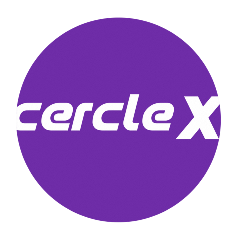
CercleX
Matched with Challenge Statement Owner SembWaste
CercleX is a SaaS based waste management company, enabling brands and governments to manage their wastes quicker, better and with 100% traceability such as Industrial Waste Management, E-waste management, Scrap Trade and EPR.
Addressing: Zero-waste

Lixo
Matched with Challenge Statement Owner SembWaste
Lixo boosts the circular economy to enable recycled raw materials to finally compete with virgin raw materials. They specializes in making AI solutions for the circular economy.
Addressing: Zero-waste


Meraque x Blixify
Matched with Challenge Statement Owner CHN Industrial
Meraque is renowned for their decade of experience in the Faclity Management industry, MERAQUE has expanded its expertise through innovative drone solutions for various industries. By modernising and transtorming these industries, Meraque heips to transition into the new and cutting-edge dgital landscape.
Blixify is a software house that philosophically believes in minimalistic and user-centric products. They are equipped with fundamental engineering knowiedge to provide development services including Full Stack Web & Mobile App Development, Artificial Intelligence (AI) deployment, Internet of Things (IoT) application, Mechanical Product Design and immersive AR/VR Design.
Addressing: Zero-waste

One.Five
Matched with Challenge Statement Owner Swisse
one.five is a biomaterials research, development and scale-up company, providing circular, cleaner and tailor-made packaging solutions in record time and with measurable impact to the consumer packaged goods industry.
Addressing Sustainable Materials, Sustainable Packaging

Powerledger
Matched with Challenge Statement Owner Solarvest
Powerledger is a fast growing tech startup that has developed a world-first blockchain enabled energy and environmental commodity trading platform to make energy markets more efficient. They have received global recognition for our technology including winning Sir Richard Branson's international Extreme Tech Challenge in 2018. In addition to recognition for the company, our co-founder Dr Jemma Green was named the Australian EY Fintech Entrepreneur of the Year.
Addressing: Renewable Energy, Green Buildings

Raitan(Hexagon Sustainability Prize Winner)
Match with Challenge Statement Owner Sentosa Development Corporate
Raitan designs Energy Storage Systems (ESS) for both grid and electric vehicle usage. They offer end-to-end solutions to help our clients build customized energy storage systems. Energy storage systems play a critical role in enabling renewable energy integration, reducing reliance on fossil fuels, and mitigating the impact of climate change.
Addressing: Renewable Energy
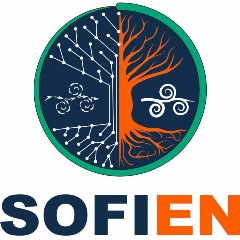
Sofien
Match with Challenge Statement Owner CHN Industrial
SOFIEN Technological Solutions for Agroindustry Ltd specializes in the R&D of agricultural and industrial machinery and equipment, it uses the most modern techniques of virtual prototyping to guarantee the efficiency and precision in the development of its products, with a significant reduction in the costs of change of design before the launch in the market.
Addressing: Zero-waste

Tobe Packaging
Matched with Challenge Statement Owner CJ CheilJedang
Tobe Packaging Industries Pte Ltd is a Singapore flexibie packaging manufacturer. They have products ranging from roll form to different type of bags and pouches. They have the capability for printing, lamination, bag making and roll slitting.
Addressing: Sustainable Materials, Sustainable Packaging
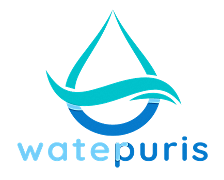
WaterPuris
Matched with Challenge Statement Owner Asia Pacific Rayon
WaterPuris inc. is a leading provider of advanced water purification technologies, offering scalable and cost-effective solutions to address global water scarcity. Their innovative systems ensure clean and safe drinking water for communities worldwide.
Addressing: Sustainable Materials
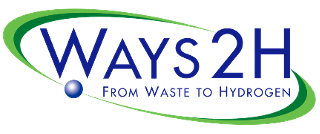
Way2H Inc.
Matched with Challenge Statement Owner Swisse
Ways2H Inc. is a wholly-owned subsidiary of Clean Energy Enterprises, a Long Beach, California, based Clean Tech management company. Their solutions help producing carbon-negative renewable hydrogen for mobility and power generation and eliminating waste by using sustainable decentralized disposal options.
Addressing: Zero-waste
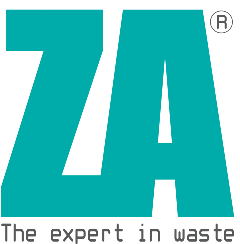
Zerowaste Asia
Matched with Challenge Statement Owner GlobalFoundries
Zerowaste Asia Pte Ltd is a comprehensive waste management company, offering end-to-end solutions for businesses and communities. Their expertise in recycling, composting, and waste-to-energy processes helps organizations minimize waste, promote sustainability, and contribute to a greener future.
Addressing: Zero-waste
Sign up for the latest innovation updates
Customise your preferences to receive updates in industries you're interested in.